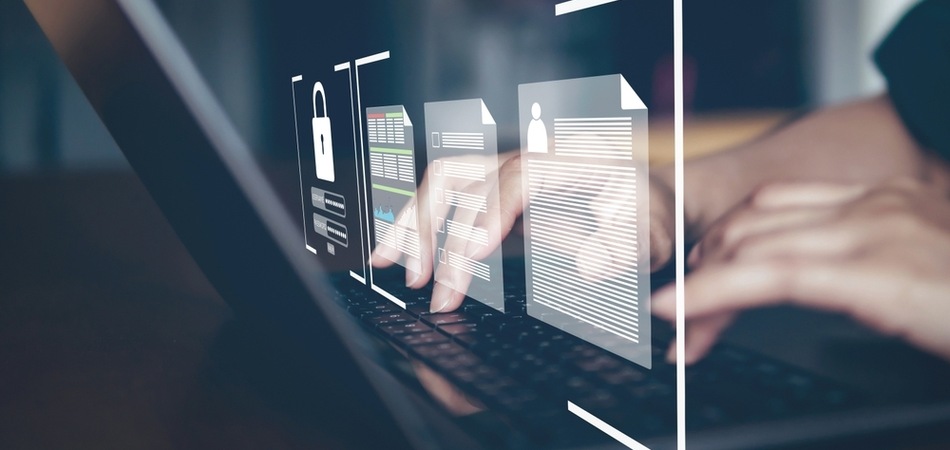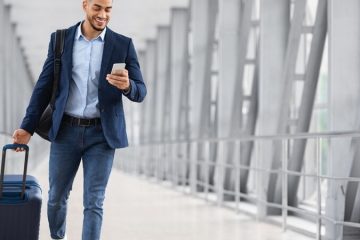Confidentiality is one of the core ethics of any business worldwide. Corporations pay a high price to maintain data security to minimize and eliminate any data theft. Among all kinds of hacking, visual hacking in business travel is very common nowadays. As the name suggests, visual hacking refers to gaining unauthorized access to sensitive information through visual means. Hackers rely on physical means to get a glance at an individual’s computer or mobile phone screens. The method is common in public spaces where people sit in close proximity to each other such as airplanes, trains, transit stations, restaurants, meeting rooms, etc.
Why should you prevent visual hacking in business travel?
1. Data breach
One of the biggest risks of visual hacking is deliberate or consequential data breach. Visual hacking can result in the loss of sensitive information such as financial numbers, client lists, asset information, and much more. Hackers can go one step further and directly record your screens with their mobile phones without you paying attention to their sneaky behavior. This can lead to severe consequences, including financial losses, reputational damage, and legal liabilities for the company.
2. Loss of intellectual property
Rather than catching a glimpse of your records, hackers would work on the goldmine. What is more dangerous than the loss of login details. The valuable intellectual property can fall into the hands of competitors or fraudsters. Business travelers can reveal information such as login details, credit card details, passwords to various cloud storage, and credentials of expense management systems, corporate travel booking systems, and HRMSs. Another risk attached to such hacking is identity theft where hackers can pose as someone else and exploit the situation.
3. Corporate espionage
If the competition is aiming to destroy you or win the race, they may resort to any means to accomplish the goal. They can hire visual hackers and spies to gain insights into your business. They will appoint top-notch spies to keep an eye on your employees and gather as much information as possible.
4. Compliance violations
Suppose you have a client that is particular about every small detail, imagine their reaction when they come to know that their data has been compromised. Though there are numerous regulations and security features online such as HIPAA, PCI-DSS, GDPR, etc., they will be of no use against visual hackers. Additionally, visual hacking can result in compliance violations and regulatory penalties on the organizations, landing them in hot water.
Types of visual hacking in business travel

1. Shoulder surfing
As clear from the name, shoulder surfing is one of the most common types of visual hacking that can be frequently seen in metros, flights, trains, etc., or any other travel and event-based environment. This involves individuals covertly observing or capturing sensitive information such as passwords, account numbers, or confidential documents by looking over the shoulder of someone using a computer, mobile device, or filling out paperwork.
2. Photography or video recording
As mentioned earlier, smartphones, cameras, and other recording devices can be used to make videos of documents and computer screens. A recording can be watched over and over again and shared easily online to obtain an individual’s correct details.
3. Bin diving
In some cases, attackers may scout through dustbins or recycling containers in hotel rooms, conference centers, or other business travel venues. They would look for discarded documents, receipts, or other such material containing confidential information. The intel can be used for identity theft or corporate espionage.
4. Wireless network snooping
Hackers may deploy specialized equipment to intercept and eavesdrop on wireless communications, such as Wi-Fi networks or Bluetooth connections. These channels are frequently used by business travelers to access corporate resources, send emails, or conduct video conferences. By intercepting sensitive data transmitted over unsecured or poorly configured networks, attackers can steal valuable information or compromise corporate systems.
How to stop visual hacking?
- Employee training is crucial to eliminate potential threats that otherwise can pose a serious risk due to ignorance.
- Implement physical security measures such as privacy screens, secure briefcases or bags, and shredding of documents.
- Utilize encryption, secure VPNs, and remote wiping capabilities on electronic devices.
- Book private cabins in flights and trains during travel for your employees.
Spreading awareness about visual hacking in business travel and employing preventive measures can save you fortunes. Companies should invest in employee training to promote security and confidentiality in the organization.
Visual Hacking In Business Travel FAQs
What is visual hacking in business travel?
Visual hacking in business travel refers to the unauthorized access of sensitive information through visual means.
What are the risks associated with visual hacking in business travel?
The risks associated with visual hacking in business travel include data breach, loss of intellectual property, corporate espionage, and compliance violations.
What are the types of visual hacking in business travel?
Common types of visual hacking in business travel include shoulder surfing, photography or video recording, bin diving, and wireless network snooping.



